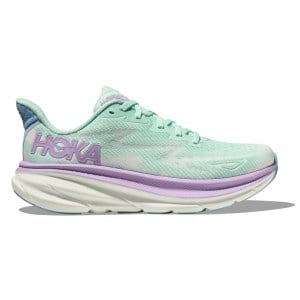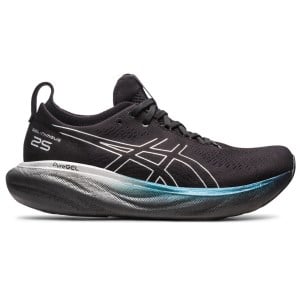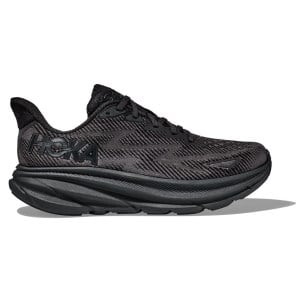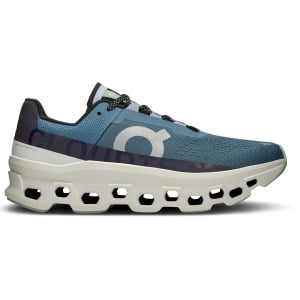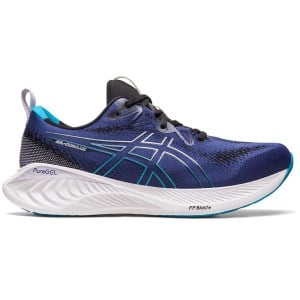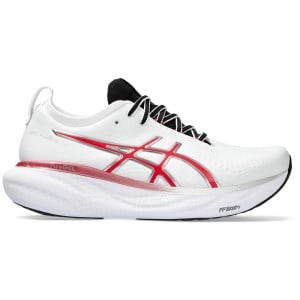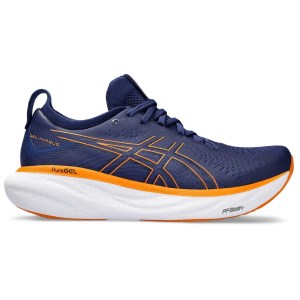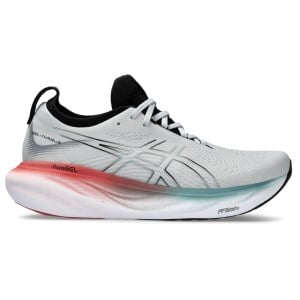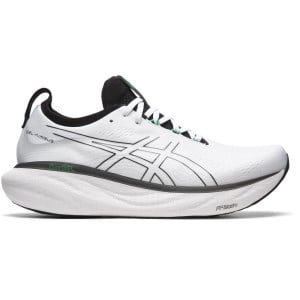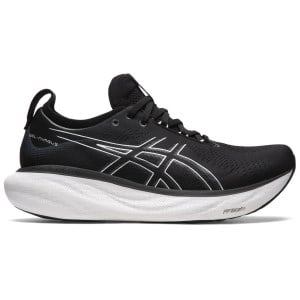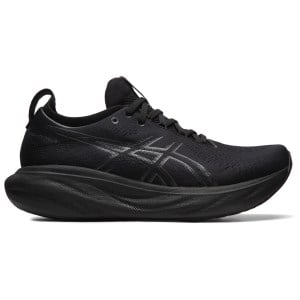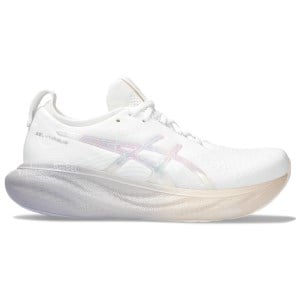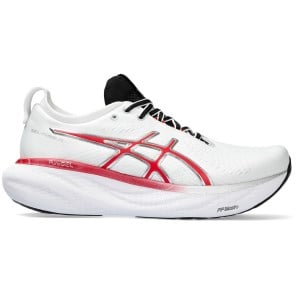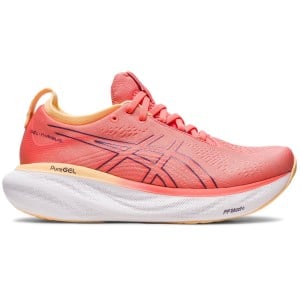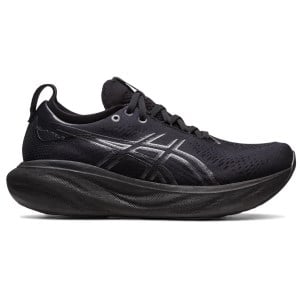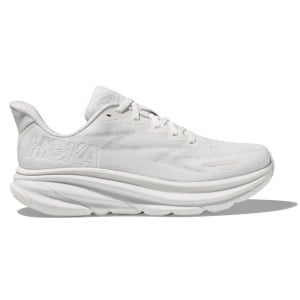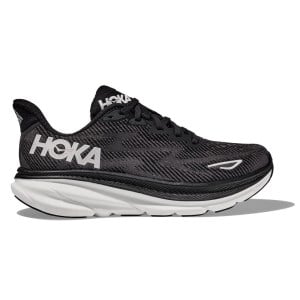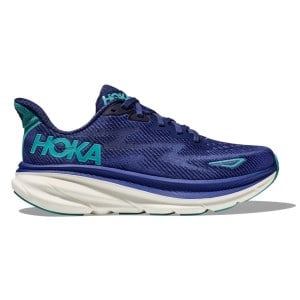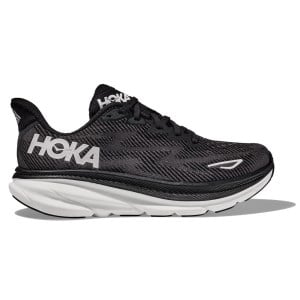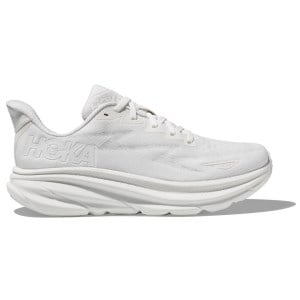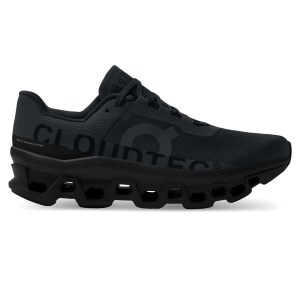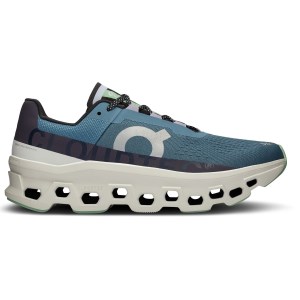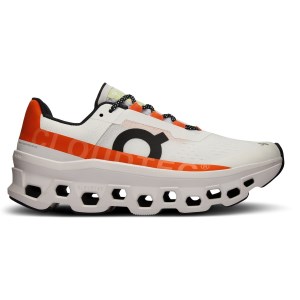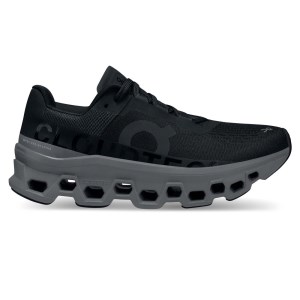Everything You Need To Know About 5-9mm Drop Running Shoes
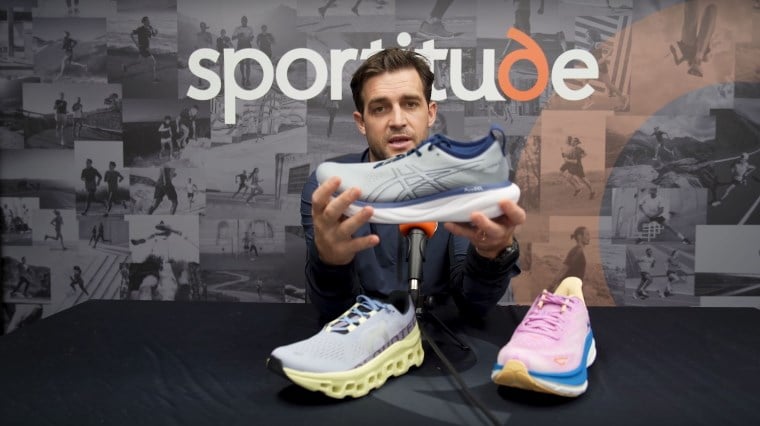
The 5-9mm drop running shoe category has risen in popularity over the last decade, with many modern runners seeking a balanced cushioned ride that feels more natural on the foot compared to traditional running shoes without compromising on protection.
To breakdown the 5-9mm drop running shoe category, Sportitude Running shoe expert Josh compares the max cushioned Asics Gel Nimbus 25 (8mm drop), the On Cloudmonster (6mm drop) with its formula of balanced cushioning and responsiveness, and the Hoka Clifton 9 (5mm drop) that provides a cushioned feel on a rocker sole.
He also discusses how the midsole density and engineering such as rocker soles and speedboards can influence your running experience within this category. Your personal running biomechanics (e.g. heel striker, midfoot striker or forefoot striker), the tolerance of your body to impact forces and of course, your comfort will also guide your running shoe selection.
Generally the 5-9mm drop running shoe category is considered a safe and versatile option for a variety of runners - offering a happy medium between 0-4mm drop running shoes and 10mm+ drop running shoes. How your feet and body react to the midsole is also a key topic of conversation when diving into the 5-9mm drop category, helping determine which specific running shoe model is right for you in terms of feel and function.
Check out the video with full transcript below.
Hi guys, today we're going to be talking all things heel-to-toe drop in a category between 5mm to 9mm. For you to understand what heel-to-toe drop is or what stack is, we have done a video and blog answering What Is Shoe Drop & Stack Height?. It explains where on the running shoe brands measure these statistics from the heel through to the forefoot to understand exactly what heel-to-toe drop measurements are.
In front of me I have three shoes that are quite different. I have the Hoka Clifton 9, the On Running Cloudmonster and the Asics Gel Nimbus 25. The Asics Gel Nimbus 25 is max cushioned and the Hoka Clifton 9 and On Running Cloudmonster belong in the cushion category.
We have two different offerings - max cushioned and cushioned - in terms of what the midsole is going to give you the runner. However, they’re all pretty similar running shoes in the conversation around heel-to-toe drop. The Hoka Clifton 9 has a 5mm drop, the On Cloudmonster has a 6mm drop and the Asics Gel Nimbus 25 has a 8mm drop.
The 5-9mm heel drop category is where the market share sits in today's industry. A lot of the conversation 10 years ago was about heel drops of 10mm+.
In the early 2010s a lot of brands were punching out running shoes that were on 8mm heel-to-toe drops, but most of them were 10mm and 12mm heel-to-toe drops. That's where we saw the market and that's what we were offering.
With brands now releasing running shoes with plated constructions and different foam densities, we're seeing a lot more of the market sitting in the 5-9mm heel-to-toe drop conversation. It’s an interesting statistic to know.
Who Should Be Considering Running Shoes With A 5–9mm Drop?
5–9mm is a pretty generous window. 0-4mm, 5-9mm and 10mm+ are the three market segmentations we have identified at Sportitude Running for heel-to-toe drops and a lot of other running shoe stores work within those three windows as well.
Why is the 5-9mm drop category important? It's the perfect blend of cushioning and response because there's not a lot you can do regarding 5-9mm heel-to-toe offsets other than produce a running shoe that's going to be pretty cushioned underneath your body.
A lot of the brands will look at this category and cater for someone that's going to need some protection. They might change the density of foam to something soft like the Asics Gel Nimbus 25 which is max cushioned, where someone wants to run on an 8mm heel-to-toe offset and get an element of compression through entry, whether heel striking or midfoot striking.
It could also be someone who likes an element of cushioning from the On Cloudmonster and wants a bit more responsiveness out of their midsole, hence why this running shoe exists.
You can also consider the Hoka Clifton 9 which is a happy hybrid between the two running shoes. It has a bit of cushioning, but also the rocker sole through the forefoot which is going to give you a nice release out of your gait cycle.
That’s a way of profiling the amount of cushioning in these running shoes. We also use this category in the fail-safe or safe to fail conversation, where someone's coming in with relatively strong overall mechanics and with good calf tolerance in their running technique.
Therefore, we don't necessarily need to have too much of a heel-to-toe pitch or really aggressive rocker sole through the forefoot to take that load off that plantar fascia and Achilles.
It's a safe to fail, fail-safe method in reference to the 5-9mm drop conversation. As I've addressed in my previous video on 0-4mm drop running shoes and my other video on 10mm+ drop running shoes, the tolerance of your calf in reference to the heel-to-toe pitch is important to consider.
Asics Gel Nimbus 25 Running Shoes: 8mm Drop
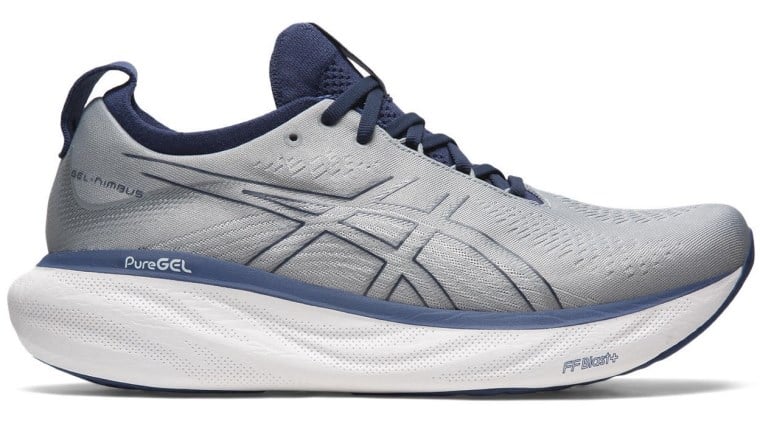
The Asics Gel Nimbus 25 running shoes have a variance of 8mm from heel to forefoot. If someone is heel striking, midfoot striking or forefoot striking, you're going to get good compression underneath the body because there's a lot of foam underneath the foot. It addresses all three entry points.
The other conversation to have around the Asics Gel Nimbus 25 is there's not a really aggressive rocker sole through the forefoot. Therefore, it's not really a running shoe that's going to take a significant amount of load off the forefoot. If that's something you need to consider as a runner, then let's have a look at the Hoka Clifton 9 running shoes.
Hoka Clifton 9 Running Shoes: 5mm Drop
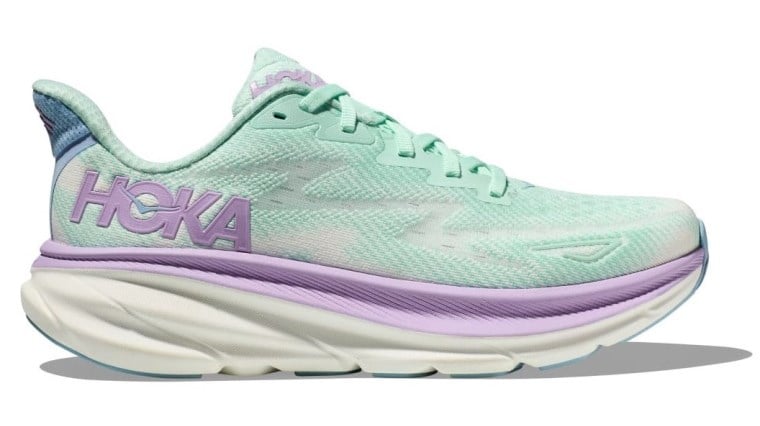
In the Hoka Clifton 9 running shoes there is an element of rocker through that front half which is the running shoe's unique point of difference. The Asics Gel Nimbus 25 is really trying to target a lot of runners regarding the amount of cushioning on offer through the heel, midfoot and forefoot. You're going to really enjoy the first point of entry with that running shoe, it’s really cushioned.
The Hoka Clifton 9 has a rocker sole through the forefoot, so therefore that takes a fair bit of load off of that release point of your gait cycle. It can also cater to a heel and a midfoot runner quite comfortably.
It’s a soft running shoe underneath the foot, but more responsive and it’s more about the release out of your gait cycle.
On Cloudmonster Running Shoes: 6mm Drop
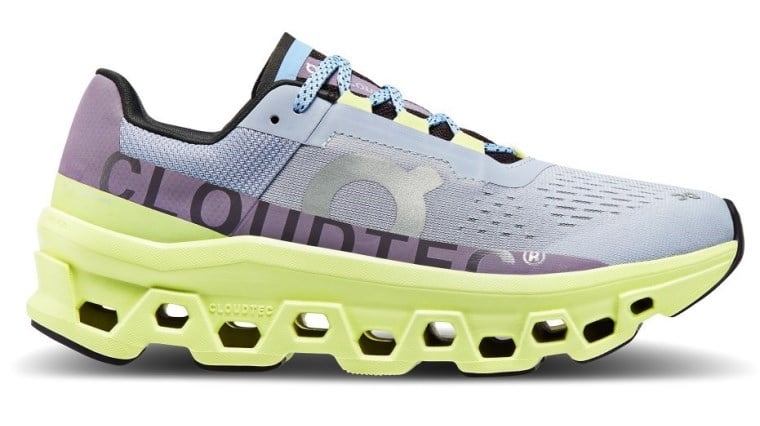
The On Cloudmonster running shoes are very unique with the speedboard sitting underneath your foot on top of the platform with the Helion foam. It’s very balanced regarding the amount of cushioning but responsiveness through the midsole.
The speedboard takes a bit of load off that forefoot which will in theory take a bit of load off your plantar fascia and also that low Achilles insertion.
Other Running Shoes In The 5-9mm Shoe Drop Category
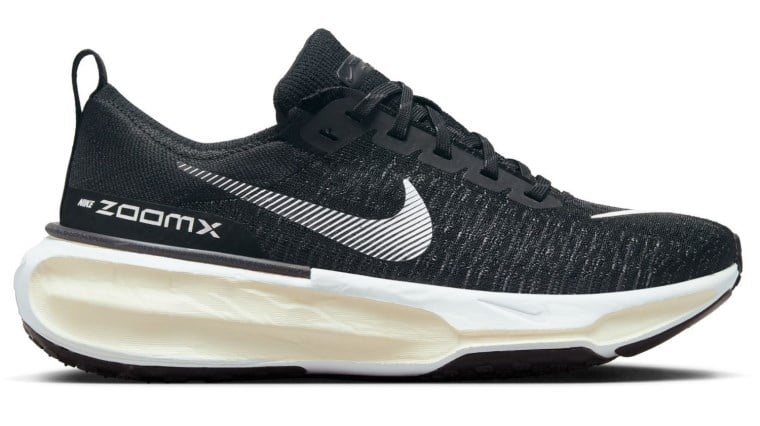
These running shoes are all catering to the same category of heel-to-toe offset, but there are so many different needs with reference to you the runner and why you would consider a particular heel-to-toe drop or a particular amount of stack height.
Sportitude Running has a significant amount of other running shoes that come into this conversation including the Asics Gel Cumulus 25, the Saucony Ride and the Nike ZoomX Invincible Run Flyknit (above).
There is a lot of other running shoes that come into this conversation, all having slightly different offerings in the midsole density and the midsole performance, which is where most the conversation on this topic will lead.
The Wrap Up
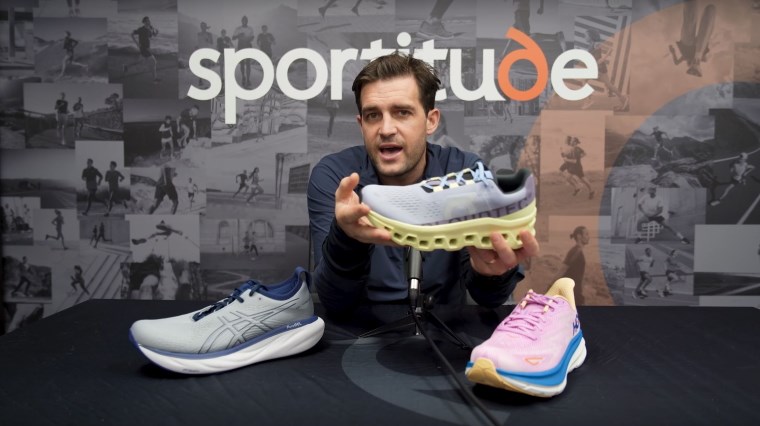
I've profiled how all three of these running shoes - the Asics Gel Nimbus 25, On Cloudmonster and the Hoka Clifton 9 - perform for the vast majority of runners. This is where most of our conversation starts and this is where a lot of brands are putting most of their offerings for you the running community.
In reference to the 5-9mm drop, more brands are making more running shoes that sit in this category than what they had done previously. It's more about how you react to that midsole and more to the point, how you land in the running shoe (heel striking, midfoot striking or forefoot striking) and what are you seeking from that first point of entry.
From there we'll understand what you can tolerate from a heel-to-toe drop and also the density of foam which will then lead us to the ultimate outcome being the performance running shoes that you are looking for.
It’s a broad conversation, but hopefully today has given you some context around what brands are doing in that 5- 9mm drop space for running shoes.
If you have any questions, please contact our Sportitude Running shoe experts. We have also done a blog and video on 0-4mm drop running shoes, and the 10mm+ drop running shoes blog and video will be coming in the weeks to follow.
If you want to hang out for those videos, subscribe to the Sportitude YouTube channel to stay notified and you'll get the full picture of the heel-to-toe drop industry in 2023.
Thanks for tuning in. Stay safe, be kind of one another, happy running and we'll see you on the road. Take care.
For a more in-depth shoe fitting experience, you can book a free 15 minute video chat in a Live Fit session or make an appointment to discover your RunDNA at Sportitude Running@Hindmarsh.
Follow Sportitude Running at:
Instagram: sportitude.running
If you liked this, you'll love:
Everything You Need To Know About 0-4mm Drop Running Shoes
Everything You Need To Know About 10mm+ Drop Running Shoes
A Runner's Guide: What Is Shoe Drop & Stack Height?
What Type Of Running Shoe Is Best For Me?
-
Asics Gel Nimbus 25 Anniversary - Mens Running Shoes
-
Asics Gel Nimbus 25 - Mens Running Shoes
-
Asics Gel Nimbus 25 - Mens Running Shoes
-
Asics Gel Nimbus 25 - Mens Running Shoes
-
Asics Gel Nimbus 25 - Mens Running Shoes
-
Asics Gel Nimbus 25 - Mens Running Shoes
-
Asics Gel Nimbus 25 Anniversary - Womens Running Shoes
-
Asics Gel Nimbus 25 Anniversary - Womens Running Shoes
-
Asics Gel Nimbus 25 - Womens Running Shoes
-
Asics Gel Nimbus 25 - Womens Running Shoes
-
Asics Gel Nimbus 25 - Womens Running Shoes

